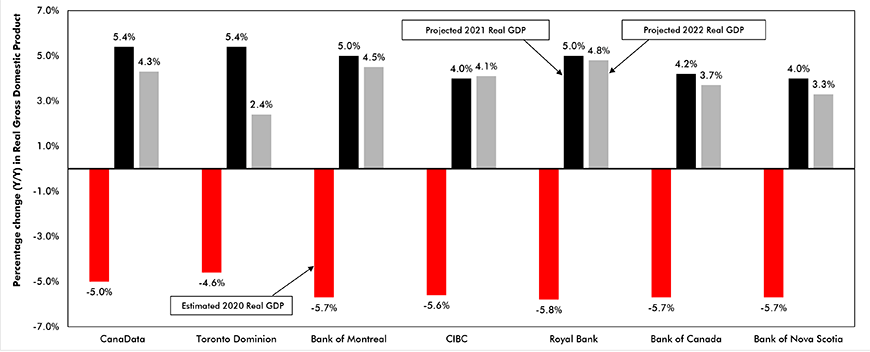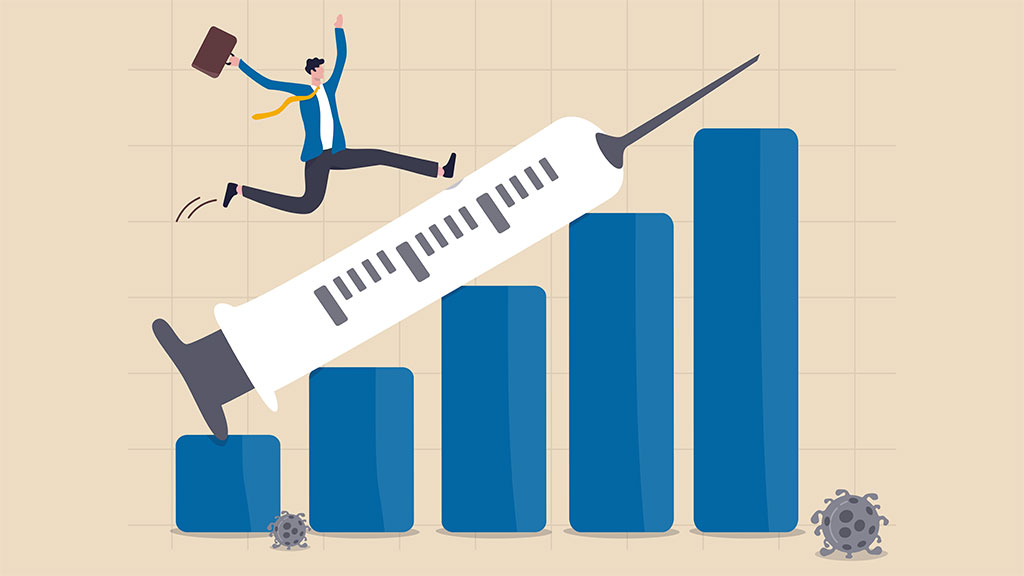It would be difficult to imagine a series of horrific events that could match the negative impacts that COVID-19 has had on global economic activity during the year just ending. That said, from our perspective, the announcement of the delivery of several very effective COVID-19 vaccines, globally and locally, has switched on a light at the end of what, up until now, has been an exceedingly dark tunnel.
While the recent escalation in the incidence of the virus globally over the past two-and-a-half months suggests the tunnel is longer than many had thought, the start of coronavirus vaccinations in the United Kingdom, Canada, the United States and in the European Union has reduced uncertainty and raised both business and consumer confidence. This is reinforced by the most recent OECD economic outlook which notes that “while the pandemic continues to exert a substantial toll on economies … prospects for an eventual path out of the crisis have improved”.
Multi-nation vaccination plans brighten global outlook
With the global economy now posting a faster recovery than expected in June, the International Monetary Fund (IMF) is projecting global output to contract by -4.4% in 2020, less than the -4.9% decline anticipated five months ago. Consistent with the strong Q3 recovery in the G20 group of countries, which account for 80% of global economic output, the IMF is projecting the global economy will grow by +4.3% in 2021 and by +3.7% in 2022. Consistent with this improved G20 outlook, the IHS increased to 58.6 in December, a 34-month high.
U.S. Federal Reserve has raised 2020 and 2021 growth projections
Midway through the fourth quarter of 2020, — i.e., ahead of the Presidential election, the announcement of an effective COVID-19 vaccine and the onset of the second wave of the coronavirus, — two forward-looking indicators of U.S. economic activity were pointing higher.
The Chicago Fed Activity Index and the Conference Board’s Leading Indicator moved upwards in October, signalling faster growth in the fourth quarter. The steeper-than-expected second wave of COVID-19 in late October, though, cooled confidence in November. During the month, the National Federation of Independent Business’ Optimism Index retreated by -2.5 points and the Institute for Supply Management’s Manufacturing PMI fell by -1.8 points.
While the recent escalation of COVID cases casts a pall over the near-term outlook, the pre-emptive release of several effective COVID-19 vaccines has given a significant boost to consumer confidence, as indicated by the recent uptick in the , and the increase in investor confidence reflected by the sustained improvement in the S&P 500 index.
Although there are concerns about the lingering impact of COVID on the economy, the consensus view calls for the U.S. to grow in the range of +3.5% to +4.5% in 2021 and by +2.5% to +3.5% in 2022, after contracting by an estimated -3.5% in 2020. It is worth noting that the U.S. Fed recently upped its 2020 GDP estimate from -3.7% to -2.4% and now expects the economy to expand by +4.2% in 2021.
Vaccines raise likelihood of a second V-shaped recovery
Many expected the Canadian economy to remain on its knees in the wake of the first wave of COVID-19. This opinion was upended by the recent Stats Canada report which found that after contracting by -38% (SAAR) in the second quarter, the economy grew by +40% at an annual rate in the third quarter, fuelled by pent-up demand for consumer goods (especially motor vehicles) and housing. After dropping by -55% (SAAR) in Q2, non-residential construction did recover slightly in Q3. But its growth was limited by post- pandemic uncertainty.
Measures to limit the spread of the second wave of COVID-19 will exert a drag on growth in the final quarter of 2020, extending into the first half of 2021. Several indicators suggest, however, that growth will recover late in the first half or early in the second half of next year.
First, the initial distribution of vaccines will give a big boost to consumer confidence. Second, following exceptionally strong growth since mid-2020, housing demand will likely cool this year. However, home building and consumer spending will continue to be buttressed by persisting low-interest rates and a rebound in permanent net migration.
Third, the will continue to underpin household and business spending levels well into 2021. Fourth, record-high household savings should sustain consumer spending and residential construction. Finally, an improved outlook for sales will cause firms, mainly in the retail sector, to rebuild their inventories, which have shrunk dramatically over the past two quarters.
Bottom line
Fuelled by the variables noted above, domestic demand in Canada should post a solid gain in the first half of 2021. At the same time, Canada’s exports will benefit from a rebound in U.S. growth driven in part by the stimulus package that was recently passed by Congress. We expect this combination of stronger domestic and external demand to lift GDP from an estimated -5.0% y/y in 2020 to +5.4% in 2021 and +4.3% in 2022.
John Clinkard has over 35 years’ experience as an economist in international, national and regional research and analysis with leading financial institutions and media outlets in Canada.
Comparison of Forecasts of Canadian Real Gross Domestic Product for 2020, 2021 and 2022

Bank of Canada, Bank of Nova Scotia
Chart: ɫ��ɫ – CanaData.


Recent Comments
comments for this post are closed